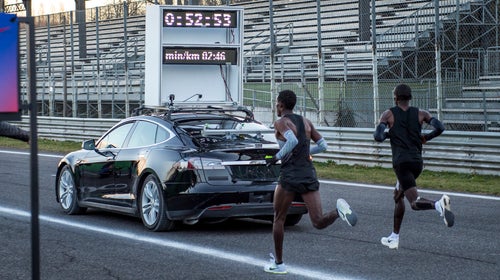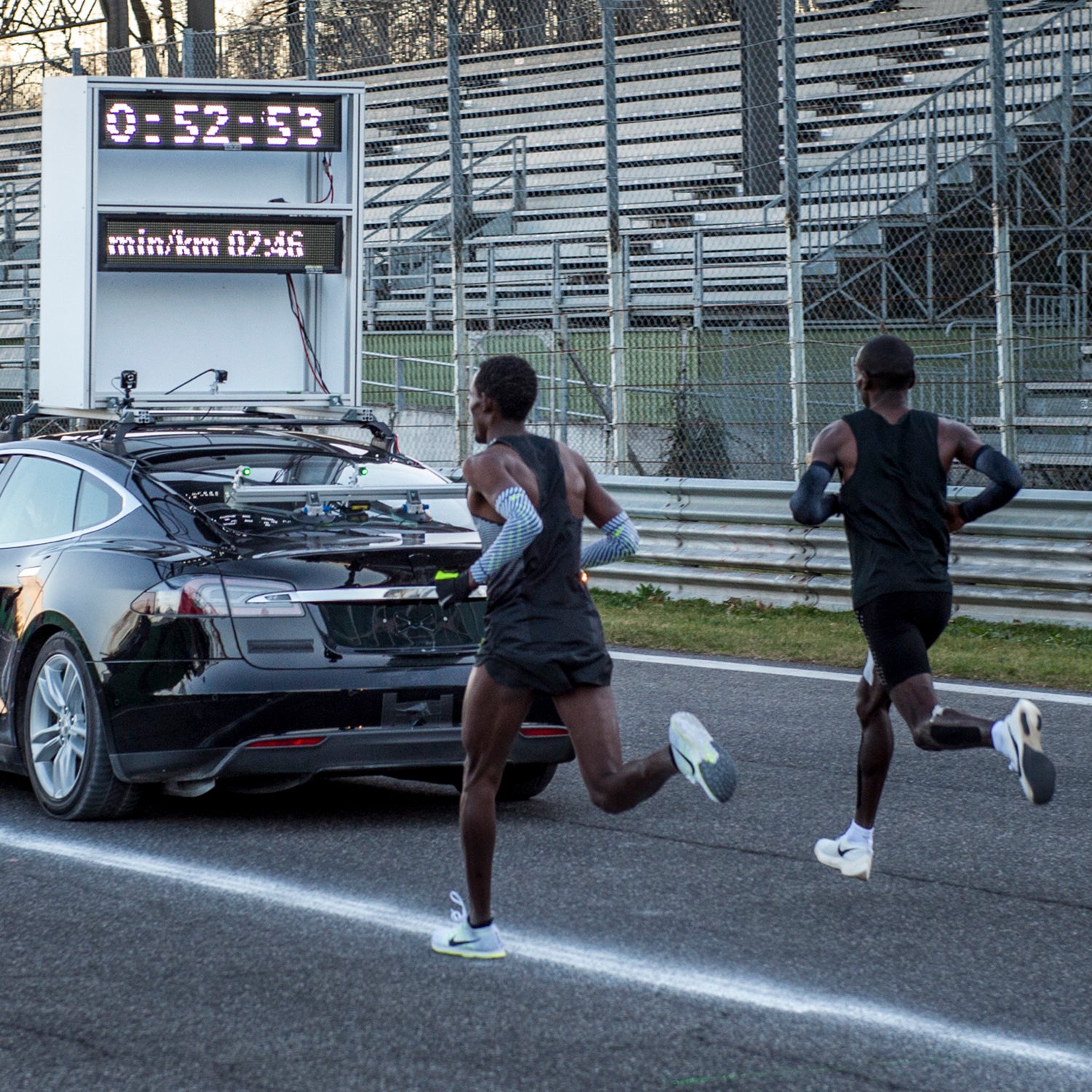This May, Eliud Kipchoge, Lelisa Desisa, and Zersenay Tadese will toe the start line in Nike’s Breaking2 project, an attempt to run the first-ever sub-two-hour marathon. To succeed, they won’t just have to train for speed and stamina. They’ll also need to master a new fueling strategy.
“Typically, the higher the relative intensity, the more difficult it is to ingest liquid or food substances,” says Brett Kirby, a human bioenergetics expert at Nike Sport Research Lab in Beaverton, Oregon. Running at a demanding 4:35-per-mile pace inevitably presents challenges for how to properly fuel.
To maintain such a fast pace for 26.2 miles, runners will need to consume more carbohydrates than they’d typically ingest during a marathon. While it’s possible that they could run for two hours without taking in carbs, the runners’ pace would almost certainly falter near the end, says Asker Jeukendrup, exercise physiologist and co-founder of . That means their guts need to be trained—just like the rest of their bodies—to be able to take on this workload and prevent any drop-off from their split times. They’ll have to practice fueling at shorter intervals so their intestines grow accustomed to absorbing and using the energy to keep muscles fed and firing, says Jeukendrup. Through trial and error during training, the athletes will nail down a formula for what they should ingest, and when, to avoid GI pain.
“The laboratory results are really clear that higher intake will result in better performance.”
The first test for this strategy came on March 7, when Nike ran the half-marathon Breaking2 attempt. Two runners finished under the 60-minute mark—approximately the pace they’d need to hold for twice that distance during the marathon. One runner fell off the pace slightly and finished in just over an hour. Nike used the race to test nutrition strategies that could be used in the real event. The trial took place at the planned venue for the attempt—a Formula One racetrack in Monza, Italy—so the climate and surface conditions would be the same.
In the test, Kirby rode a moped and passed out bottles of a carbohydrate blend—tailored specifically for each runner—on every 1.5-mile loop, or approximately every seven minutes. That’s about twice as often as fluid stations appear in typical organized marathons. “Research shows that drinking smaller volumes more frequently can be beneficial, so we are looking at providing hydration and nutrition offerings at smaller intervals throughout the race,” Kirby says. This research formed the basis of their strategy for the half-marathon test run. Nike hasn’t yet specified whether the nutrition timing in the half will be the same in the marathon or what the precise makeup of the sports drinks will be for race day. But the solutions could be a mix of carbs like fructose and glucose since ingesting multiple types during a race typically makes them easier to digest, according to Jeukendrup. Runners have also been directed to eat foods high in nitrate beforehand, such as leafy greens and beetroot. Nitrate may relax the muscle cells within the blood vessel wall, which improves muscle oxygenation, efficiency, and contraction force. In addition, the runners will avoid foods that are high in fiber.
Jeukendrup’s prior research supports Nike’s efforts to significantly boost carbohydrate intake for this type of run. His work compared a marathoner ingesting 20 to 25 grams of carbohydrates per hour to one ingesting 40 to 50 grams per hour. “The laboratory results are really clear that higher intake will result in better performance,” he says.
During the race, Nike will provide a specialized fueling plan for each athlete based on how they’ve responded to the test run and training. Regardless of the exact final number, ramping up intake to 60 to 90 grams per hour—the goal range for the runners—will work only if practiced extensively. “It’s a huge amount if you aren’t used to it,” says Jeukendrup.
It’s also important to look at the past performances and fueling approaches of each athlete, since any person’s ability to eat during a big effort varies dramatically. The Nike team found that the athletes had never developed extensive race nutrition programs, so they had little knowledge of how well the runners would tolerate different types of sugar or carbohydrates.
To fill this data gap, the athletes hit Nike’s environmental simulation chamber. There, researchers tracked environmental conditions, core body temperature, skin temperature, body fluid loss, and muscle glycogen levels, with the end goal being a bespoke fuel plan for each athlete. Variations will include delivery method (think: gel versus liquid), temperature, concentration of liquid mix, and type of carb in the mix (think: glucose versus fructose).
When the three runners finally put their strategies to the test in May, sports scientists will be watching. “It’s definitely at the limit of human physiology,” says Jeukendrup. “That’s why it’s exciting.”


